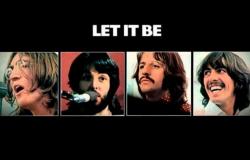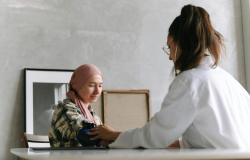He Dr. Telmo Muñoz He is the medical director of Nexbel clinics (with several centers in Madrid) and one of the voices that, we consider, is transforming the conversation around the Aesthetic medicine. Therefore, we could not stop talking to him about the great changes that the sector is experiencing. At a time where demand is stabilized after a postpandemic excessive boom, where men begin to play a more important role as consumers and in full boiling of regenerative medicine, the specialist proposes us proposes a new way of addressing aesthetics: more holistic, more personalized and less obsessed with immediate results. With an honest look on what is changing in the consultations and outside them, we talk to Dr. Muñoz about trends, ethics and the future of a discipline that, increasingly, resembles real medicine.
We just sit next to your side and before we start talking, you are already giving us headlines about a great paradigm shift in your sector … What happened in the last six months so that the panorama of aesthetic medicine has changed so much?
A disruptive event has happened: the entry of regenerative medicine. In addition, the general consumption of aesthetic services has decreased. Since 2020, when leaving the pandemic, there was a large increase in new patients exploring immediate treatments such as hyaluronic acid and botulinum toxin. Many of them had never done anything before and there they began. This was a before and after.
“Aesthetic medicine is not about landfills, it goes on health and diagnosis”
Yes, as you point out – and before entering the current changes – we came from a great one … because the pandemic in the end revolutionized everything, the sector of aesthetic medicine was not exempt from changes … how did COVID 19 affected the sector and medical professionals?
Pandemia sold out many doctors. We left her feeling as numbers within healing medicine. That drove many to train in aesthetic medicine: doctors from all specialties made masters and launched to open clinics. Mainly, there were three major changes: on the one handpeople began to invest more in their appearanceenjoying more of life after accumulated savings. Then, Many doctors entered the aesthetics sector looking for new professional paths. Madrid also received a massive arrival of Latin American doctors, which changed the ecosystem of the clinics and for three or four years the demand was very high, with constant patients in the clinics. Besides, new ones emerged in shopping centerseven more approaching these treatments to the general public.
And now, returning to the present … What has changed and is changing now?
Last year, inflation and global crisis affected consumption. The family budget was reduced due to the rise in fuels and food. Even so, an important patient group has fiddled: those who saw the real benefits of treatments.
“Men already represent 3 out of 10 patients in aesthetic treatments”
When did this transformation in depth begin about?
It began to be received between 2021 and 2024, but it is now, in 2025, when we are noticing a very clear change: there is more time to diagnose, patients are open to listen, to look for a comprehensive and personalized approach.
What kind of treatments are earning more prominence?
Multi -technic treatments. They are no longer limited to botulinum toxin or hyaluronic acid, but seek to integrate different techniques. The demand has also grown a lot: they previously represented 1 in 20 patients, now there are 3 out of 10.
What role does regenerative medicine play now?
A fundamental role, without a doubt. Before, aesthetic medicine only pallowed the signs of aging; Now we are working to delay it in a real way, using advanced technologies and regenerative medicine.
What importance are, for example, the collagen inductors – of which we speak so much – in this new scenario?
A lot. Although they exist more than 20 years ago, they are now better. They can act as fillings or as inductors, depending on the technique and experience of the doctor and that makes a difference.
“Today a patient immediately detects a doctor who does not control their treatments. There is a lot of exposure, but also a lot of information”
How would you describe the current patient?
Today there are fewer patients than before, but they are much more faithful and much better informed. Thanks to social networks, patients recognize doctors with greater criteria and demand quality quality.
Before they arrived directly by requesting botulinum toxin or fillings. Now they seek diagnosis, information, a more comprehensive approach. They are also more loyalty and trained, they know what medical honesty want and value.
Have social networks also changed the way of consuming aesthetics?
Definitely. Today a patient immediately detects a doctor who does not control their treatments. There is a lot of exposure, but also a lot of information. That raises the level of demand and transparency in our profession.
How do you see the future of aesthetic medicine? Where are we going?
We are in a paradigm shift. It is no longer just a visual issue, but of integral health. This forces clinics to invest more in technology and continuous training. The future goes through individualizing each treatment and adapting it to each patient. We go towards the most absolute customization, towards technology with meaning. You have to stop selling only visual products or effects and start thinking about medical vision treatment plans. Aesthetics should respect the patient’s biology.






